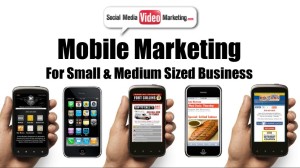Guest Post by Alex Oliveira
Today’s businesses and brands can’t afford to adapt to consumers demanding to communicate via their smartphones and mobile devices. Mobile as a technology and mobile marketing is relatively young; however, it has evolved at the speed of light. Mobile as a technology has become largely inseparable from how we go about our days. To think that the first generation iPhone was released on June 29, 2007 is pretty remarkable. The 1st version of the Android mobile operating system began with the release of the Android beta in November 2007, followed by the first commercial version, Android 1.0, which was released in September 2008.
The HTC Dream was the first smartphone to use the Android technology. Since then we’ve all replaced other technologies, such as Cameras, Video Recorders, Sound Recorders, CRM’s, Chat, Banking, Calendars, Calculator, Books, Address Book, MP3’s, PDA’s, Alarm Clocks, GPS, Coupons, Newspapers, Laptops, TV’s, Gaming and much more, with our smartphones. . There’s no doubt that as a business, you need to “go mobile.” Here are 7 stats that will help you understand why you need to adapt to mobile technology and marketing in 2015:
- 186 million people in the US own a smartphone (source: comscore.com)
- 29% of Americans use ONLY mobile devices to access the internet (source: ondeviceresearch.com)
- 91% of U.S. adults own a cellphone (source: theatlantic.com)
- 75% of mobile users are looking for real-time, location based information on their phones
- 90% of those mobile searches lead to an action (gomonews.com)
- 70% of those actions take place within an hour of the search (CMO Council) — which makes sense, because we search for something when we need it…and finding a solution to that need, especially one that is close by, makes taking action incredibly compelling
- As much as 50% of emails are read on mobile devices
Consumers, businesses and marketers are doing everything to adapt to the daily changes in this technology. Now that we’ve covered a short piece of mobile and smartphone history, how it’s being used, along with some eye-opening stats, let’s look at “what” technologies and marketing strategies businesses and brands should pay attention to in the mobile space in 2015 and beyond.
- Responsive Web Design and Content– First and foremost (and regardless of your product or service and geo-market), your digital assets need to be responsive. Understanding that soon the majority of consumers will be mobile and using mostly their smartphones to access your website and other digital content is step one. Therefore, it’s imperative that you have a responsive web design.
- Payment Systems – Retailers need to integrate payment systems like Google Wallet and Apple Pay to their terminals. Other systems, like mobile credit card readers such as Square, Intuit and Paypal, provide free devices to connect to your smartphone or tablet so that you can easily take payments from your customers.
- NFC Location-based Advertising – This is one area that has been considered the Holy Grail for years. A lack of access to accurate location data and the inventory to go with it has hindered growth. Wearables is playing a big part in the growth now. Advertisers and Publishers are using location and object-based triggers based on technologies such as NFC, GPS and the Internet of Things to increase ad relevancy in real-time. If consumer adoption of wearables is as strong as it has been predicted, location-based mobile ads could make up 25% of all mobile ad spend in 2015.
- Programmatic Ad Buying- Programmatic buying has been one of the fastest-growing sectors in digital advertising in 2015. This growth has been driven by mobile. As more consumers go mobile, ad spends will shift toward mobile, thus making programmatic ad- buying explosive. The number of personal touchpoints to reach consumers continues to grow everyday as technology advancements for smartphones, tablets and wearables grow.
- Mobile Video Ads – The demand for media consumption via mobile devices and smartphones, along with faster cellular and Wi-Fi connections, means mobile video advertising will have an explosive year in 2015. The growth in video ads indicates that advertisers and consumers are in favor of this technology over rich media. For advertisers it provides their potential customers a personal experience via smartphones and other mobile devices.
- Apps – Whether you use Apple or Google Play to get apps on your smartphone or mobile device, you’ll find thousands of opportunities to deliver display ads to consumers who use those apps daily. There’s no doubt that the publishers who create these apps will soon be delivering smarter ad formats on Google Glasses, Apple Watch, and Pandora as well as other wearables.
Now that you understand what technologies and marketing strategies are being used in the mobile space, it’s important to set aside a few hours each week to start creating a Mobile Marketing plan that fits your business. Consider what mobile technologies and mobile marketing strategies you need to integrate into your businesses products and services. Two great places to start would be to send out a survey to your customers and to research what your top competitors are doing in mobile that you’re not. For more on mobile marketing you can see a short video on our Youtube Channel – https://www.youtube.com/watch?v=eqF63To6Vx0.
